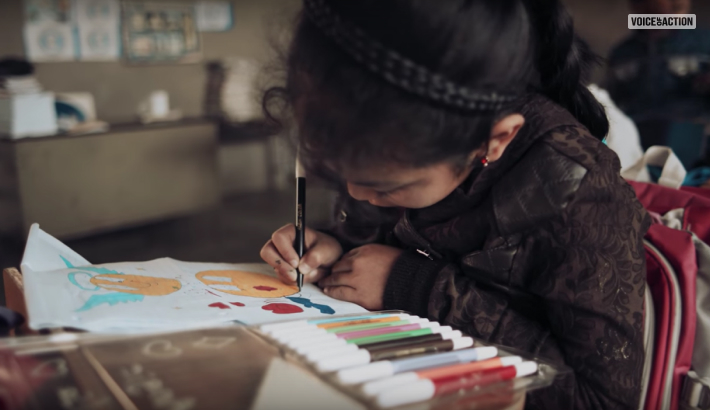No Chance For Education! Shocking Child Labor Facts You Should Know

The work towards minimizing child labor continues to this day, and the consensus is changing every year.
From the top data collection points, we have jotted down some of the shocking child labor facts you should know.
It is sad to think that something as fundamental as education is not a privilege for everyone. In fact, born in a world of spiraling poverty, earning their living is all they know.
To begin with, the causes of such early employment are uncontrollable.
Disasters, man-made social issues, and generational poverty make education a luxury for some. The sustenance needs rise above the need for knowledge.
But is that all when it comes to the child labor index? Let’s find out more facts on child labor.
Current child labor status
Children dropping out of school and engaging in child labor is nothing new. The scenario is the same across all regions. And the problem doesn’t seem to aggravate. However, the situation in Southeastern and Eastern Asia is the worst.
Around 37.2% of children drop out and engage in cheap labor. The situation is almost similar in Central and Southern Asia. Here, 35.3% of the children are involved in forced or voluntary child labor.
Africa also seems to be catching up. In Northern Africa and Western Asia regions, 28% of children are doing child labor. It is precisely the same in Sub-Saharan Africa. The Caribbean and Latin are trying to cope with the scenario by putting severe bans on child labor.
In both regions, the rate of child labor is not more than 15%, as Unicef finds.
Where are we heading?
It is difficult to break the cycle of poverty. In the LDCs, tiger are multiple economic layers. The creme is the richest, followed by the crust. Hence, about 1 out of 10 children in the world is engaged in child labor. Of them, 53 million have dropped out of school, and that’s alarming.
But the fact’s that children are dropping education at nascent ages- 5 to 12 years. At this age, education is a must. When the children don’t get voluntary education, their future earning potential also becomes limited. But there is one silver lining. In the last 25 years, the overall rate of child labor has not increased. Meanwhile, it did not decrease either.
Shocking Facts About Child Labor

The UN confirms that in the third-world countries with the lowest economic GDP, 1 out of 5 children are child laborers. Child labor is children under the age of 14 working as laborers in inhospitable conditions with the lowest wages.
1. Child Labor Rates Are Declining

Talking about shocking facts, let’s begin with a positive note.
Did you know child labor is actually preventable, and the index shows it is in decline?
- Since the year 2000, the child labor rate has decreased by a point of ⅓.
- Social media promoting actions like businesses advocating towards educating the underprivileged, building a civil body to raise questions, and voicing child rights are the reasons behind the decline.
- In the past two decades, the construction of schools in rural areas has been increasing.
- Plus, we can also commend the government policies encouraging parents to send their girl child to schools.
2. It Prevents From Breaking The Cycle Of Poverty

It is not wealth that breaks the cycle of poverty. Although, the poorest of the poor countries happen to believe the former. This is one of the pioneer reasons why parents send their children to earn for the family from a younger age.
However, being underaged and lacking physical and mental development keeps them in perpetual poverty. The lack of proper education and nutrition, topped with the worst working environment, keeps the children in the loop of low wages in the poverty line.
3. Not Every Child Work Is Child Labor

Although many might consider any child working below the age of 14 a child laborer, that is not the case. These are not always the proper facts on child labor.
Child labor is a problem because:
- Most work is forceful.
- The working conditions are demeaning, affecting their mental and physical health.
- Work which is depriving children of their childhood, especially restricting the right to education.
However, if a child wishes to do minimal jobs to help out his family or to earn a little pocket money, it is not child labor. Most importantly, it is during their spare time.
4. Currently, 152 Million Children Are Child Labors

From the age of 5-17, approximately 152 million children in the world are currently child laborers.
Some of the hazardous conditions they are working currently are:
- Chemical and pesticide factories.
- Regulating heavy and dangerous machinery.
- Within the depths of volatile mines.
Data says that gender inequality when it comes to child labor is not prevalent. As in, girls and boys of every religion are working as laborers in the same poor conditions
5. Drivers of child labor
There are miscellenoues reasons for which children find themselves in labor. Firstly, the economic disparity is responsible. Often, parents need the means to support education.
Secondly, parents think that four hands are better than two. Hence they encourage children to go to work at a tender age. Lastly, there needs to be more free schools in many parts of the world.
6. The Agricultural Sector Has The Highest Child Labor

Among the 152 million working in these conditions, almost 70% are from the agricultural sector.
- Not only is it heavily physical labor (since third-world countries do not have the privilege to afford high-tech farming machinery), but it also becomes emotionally taxing.
- It interferes with the child’s growth because of the harsh chemical, fertilizers, and pesticide exposure.
- The fatigue that comes from such physically taxing work often prevents the child from joining schools.
These are some of the worst-case scenarios of child labor.
7. It Is Not Money, Education Can End It

One cannot overrule generational poverty with generational wealth overnight. Yes, financial security will diminish some of their issues, but not all.
- Education crafts individuals into better human beings.
- Makes them mindful enough to earn happiness with their full potential (when they come of age) and also give back to society.
- Not being a child laborer to becoming a better citizen helps eradicate other social issues like gender inequality, hierarchical social constructs, and racism.
- Education is a child’s fundamental right, but many cannot afford it. This is why quality government education with proper meals and transport facilities is encouraging many to send their children to schools.
8. World Commits To End Child Labor Within 2025

From all the negativity & depravity, awareness is also growing. This means the government & people are taking every action possible to eradicate this social issue.
In 2015, the UN members added eradicating poverty as a sustainable goal. This also includes ending all forms of child labor by 2025.
The UN is also encouraging the common people to influence education among the underprivileged as much as possible. Protect a child’s right to proper health conditions (which mines and agricultural fields cannot guarantee).
The global Alliance that planned to do this is Target 8.7.
9. Businesses Play A Crucial Role In Eradicating Child Labor

Businesses, especially set in rural areas in the industrial sector.
- Paying proper minimal wages is something very important. So that parents do not feel compelled to add a child’s involvement to earn.
- They need to take strict action against child labor involvement and find sustainable ways to stop child labor.
- Proper working conditions in mines, fields, and factories so that someone doesn’t fall sick often. When the father is sick, the family forces underaged children to take up the work.
Even Children Can Make A Difference

Children from privileged backgrounds can also work towards eradicating child labor.
- Schools can prepare marches and protestations against child labor.
- Sending children to underprivileged areas to teach the children. A healthy form of imparting knowledge.
- Organizing charity to donate food, books, and clothes in schools.


























